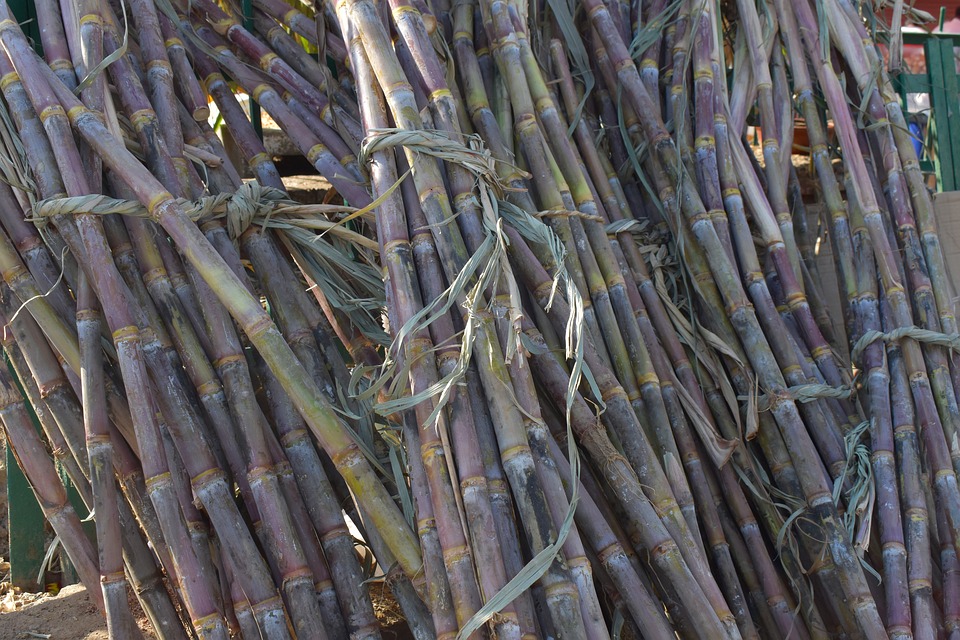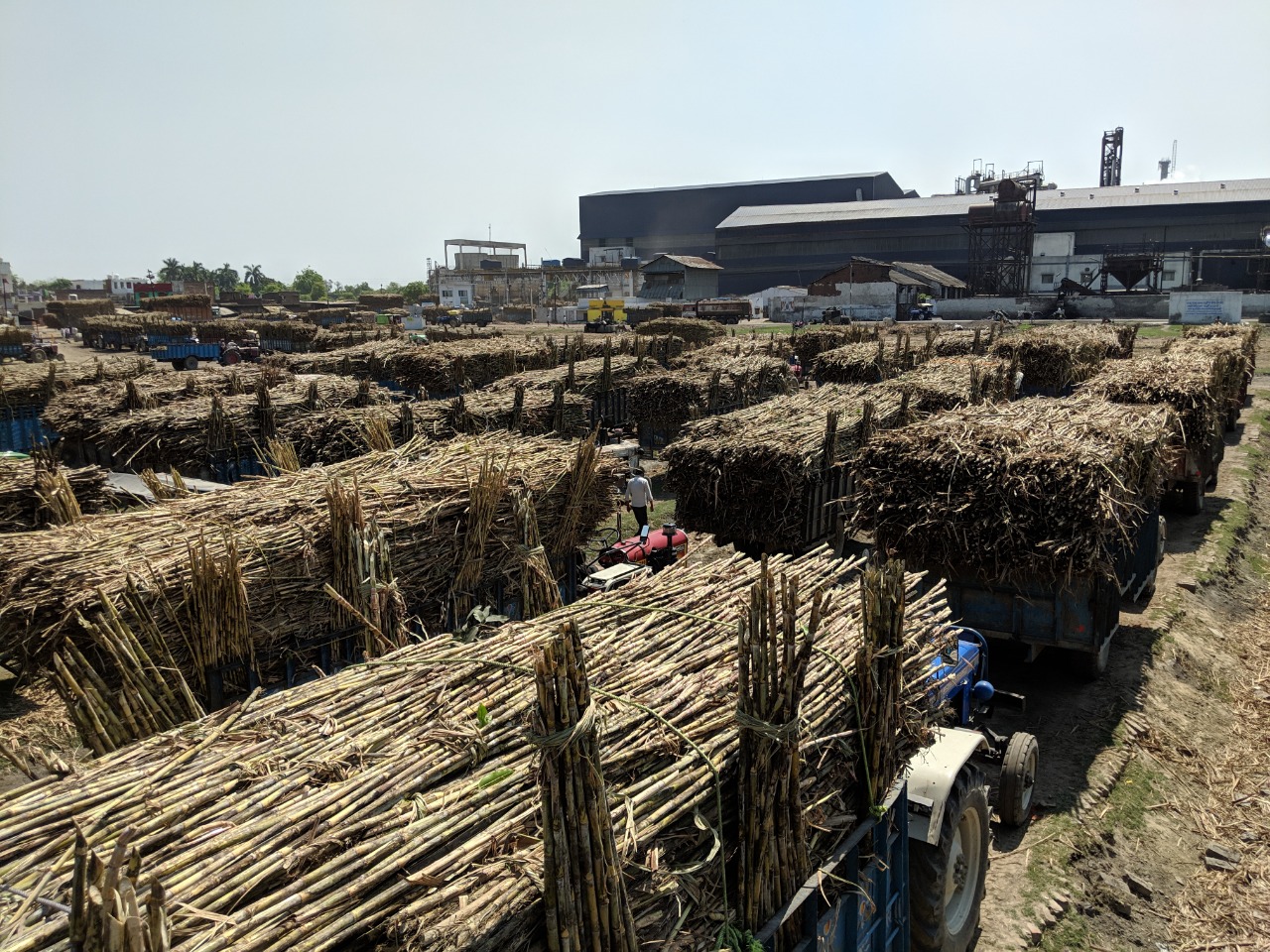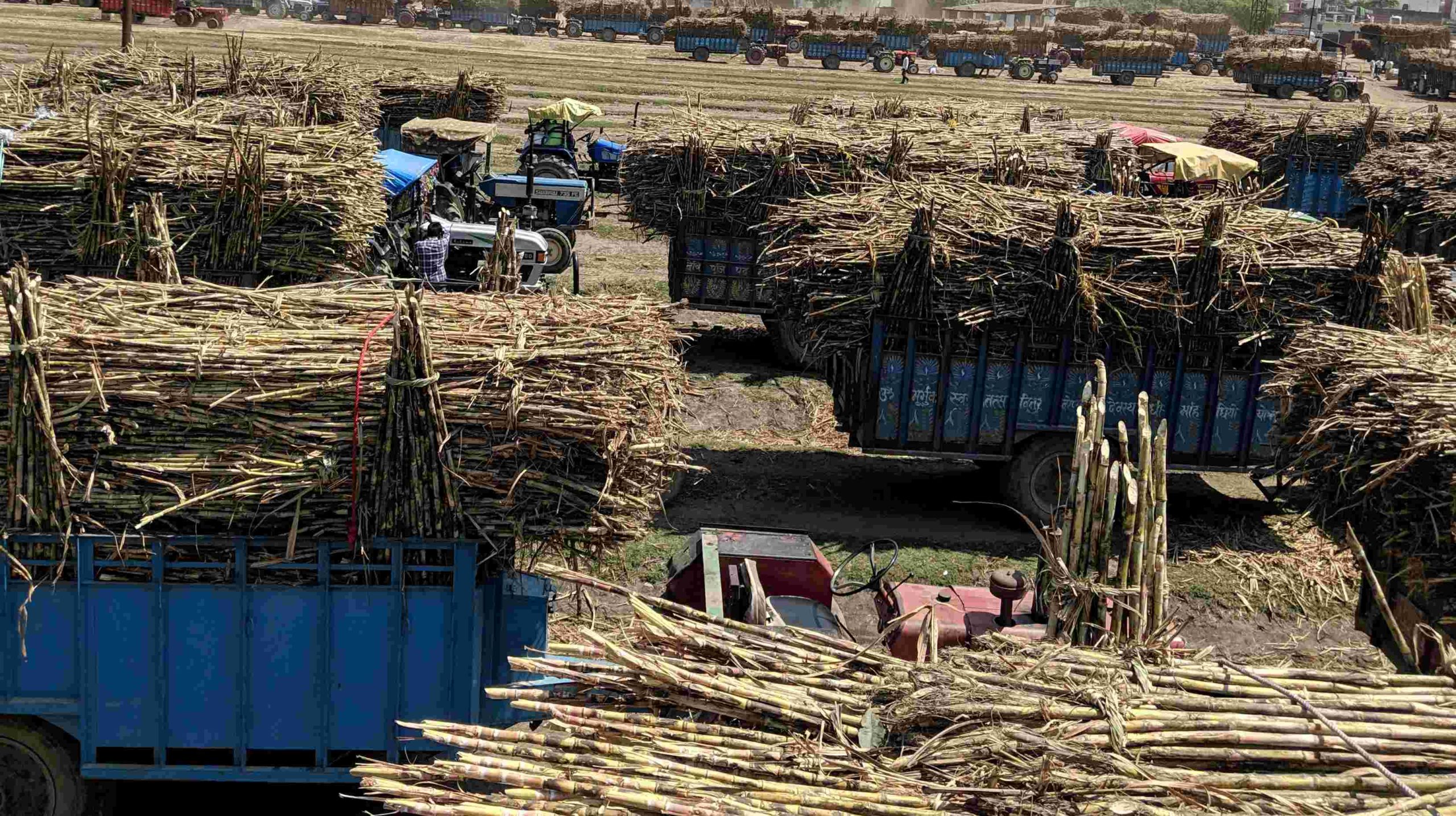Raising Cane: Rising cost of production, unsettled dues and no raise in sugarcane price for three consecutive years worries UP farmers
Sugarcane farmers in Uttar Pradesh cry foul as the price of their produce has not gone up for three consecutive years, and sugar mills are dragging their feet in paying them their dues. Politicians use the issue to trade accusations.


Photo: Arvind Shukla
Lucknow, Uttar Pradesh
On February 15, at a cabinet meeting, the Uttar Pradesh government finalised the state advised price (SAP) for sugarcane for the crushing session 2020-21. For the current crushing season, the regular sugarcane rate will be Rs 315 per quintal, the rate of early sugarcane crop Rs 325 per quintal and the rejected sugarcane crop is to be priced at Rs 310 per quintal.
This has been the SAP for the last three consecutive years. The last time the SAP for sugarcane was increased by the Uttar Pradesh government was in 2017-18, and that too, only marginally, by Rs 10 per quintal.
The farmers are crying foul saying they are in considerable distress. While the SAP remains the same, the cost of cultivation has escalated manifold, they said. Adding to their woes was the inordinate delay in getting paid for their cane by the sugar mills.
The sugar industry in the state is worth about Rs 40,000 crore but recovering pending dues from the mills has been greatly problematic for the farmers and the matter has created stir right till the Parliament.
Replying to a question in the Lok Sabha recently on February 9, the ministry of consumer affairs, food and public distribution had said that sugar mills across the country owed Rs 16,883 crore to the farmers as of 31 January 2021.
In Uttar Pradesh, in 2020-21 alone, farmers were owed to the tune of Rs 7,555.9 crore by the sugar mills in the state.

“The prices of fertilizers and diesel are increasing, the price of cooking gas is increasing, children’s school fees are increasing, everything is hit by inflation,” pointed out Rakesh Tikait, national spokesperson, Bhartiya Kisan Union. He demanded to know why, despite skyrocketing costs, the sugarcane price in Uttar Pradesh, had not been raised for more than three years.
“On one hand, the Centre claims it is implementing the Swaminathan Commission report and on the other, the sugarcane farmers are not able to recover even their cost price,” Tikait stated.
Meanwhile, a Supreme Court hearing on February 12, offered a glimmer of hope to farmers as it issued notices to 15 sugarcane-producing states, including Uttar Pradesh and Maharashtra, to settle dues.

Also Read: Bittersweet: Rs 168.83 billion due to sugarcane farmers in the country; 45% of this to UP farmers
Political drama
It has been three years since the support price of sugarcane in Uttar Pradesh has been revised. Farmers have not been paid by the sugar mills for their crop for over a year and sometimes more. The matter has become a topic of furious accusations and counter accusations amongst politicians.
Politicians are leaving no stone unturned to play the blame game.
“The Bharatiya Janata Party had promised to pay up sugarcane dues in 14 days in its election manifesto and had said it would pay interest if it could not do so in the stipulated time, but farmers’ dues worth about eleven thousand crore rupees are yet to be paid,” Ajay Kumar Lallu, Congress state president in Uttar Pradesh told Gaon Connection.
Diesel, fertiliser have become costlier but the government did not raise the sugarcane rate by a single rupee, he added.
Calling out the ruling party, Priyanka Gandhi Vadra, national general secretary, Congress party, raised the sugarcane issue in the course of the mahapanchayat that she attended at Bijnor on February 15. “Do you know that the farmers of Uttar Pradesh alone are owed as much as ten thousand crore rupees in dues,” she asked the gathering and pointed out that the nationwide amount due to sugarcane farmers was Rs 16,883 crore as of 31 January 2021. Gandhi will address farmers at the Congress Kisan Panchayat in Muzaffarnagar on February 20, and in Mathura on February 19.

“Priyanka Ji [Priyanka Gandhi Vadra] has sounded the war horn. Congress party shall hold mahapanchayats at 134 tehsils in 27 districts of UP and in Purvanchal and central UP, at the block level,” said Lallu.
Also Read: Better days lie ahead for UP’s farmers, battling non-payment of cane dues and COVID-19
The sugarcane crisis found mention even at the ongoing agitation at Delhi against the agri-laws. Bhartiya Kisan Union, which is currently contesting the new agricultural laws, has questioned the government on the issue of sugarcane farmers.

Harvest of losses
In 2018, chief minister of Uttar Pradesh, Yogi Adityanath, had advised the farmers of western Uttar Pradesh to grow crops other than sugarcane.
“Last year, I produced about seventy quintals of paddy that I was forced to sell at Rs 1,000 per quintal (government rate was Rs 1,868-1,888). I lost at least ten thousand rupees from my initial capital,” Ajay Tiwari of Ahla village in Mahauli tehsil of Sitapur, 350 kms away from Bijnor, told Gaon Connection.
Besides sugarcane, Tiwari cultivated paddy and wheat on his 15-acre (6 hectare) land. He reduced the amount of sugarcane he grew in order to make place for other crops, but that didn’t quite work well for him. “I will plant fewer acres of sugarcane this time too, but overall I will see to it that I invest a lot less than I usually do,” he said.
Jyotsnendra Singh, director, Sugarcane Research Council, Shahjahanpur in Uttar Pradesh, told Gaon Connection, that sugarcane could be profitable if it was cultivated along with other crops. “One should plant sugarcane in September-October and then subsequently add potatoes, onions and other crops. In this way, in nine months, one will continue to generate some income from farming,” he explained. The research institute is experimenting with co-cultivating sugarcane and soybean.
According to Singh, there are 375 acres (152 hectare) of cultivable land in the nine sugarcane research institutions including his own institute (HQ) in Shahjahanpur. Research and experiments had shown that while the cost of cultivating crops including sugarcane was about Rs 2.5 crore in 2018-19, and their income was Rs four crores, with new methods and use of better machinery the projected cost for 2020-21 was Rs two crores and the income more than Rs five crores respectively. But these are experiments in a controlled environment, yet to be carried into real time practice of agriculture.
Ammar Zaidi, a sugarcane farmer from Hardoi, broke down the expenses of cultivating sugarcane for Gaon Connection.
According to him, sugarcane cultivation takes six to nine watering based upon the weather and irrigating an acre of land takes five hours. Because the cost of diesel is eighty rupees a litre, it costs anything between fifteen hundred to eighteen hundred rupees to transport seventy to eighty quintals of sugarcane a distance of fifteen kms to the mills. This means the transportation cost from the field to the mill is about Rs 280 per quintal. The average production of the common farmer is 300-350 quintals per acre and there is no knowing as to when he would be paid for his produce. “This is the reason the sugarcane acreage is on a decline,” he concluded.
With Inputs from Mohit Shukla.

